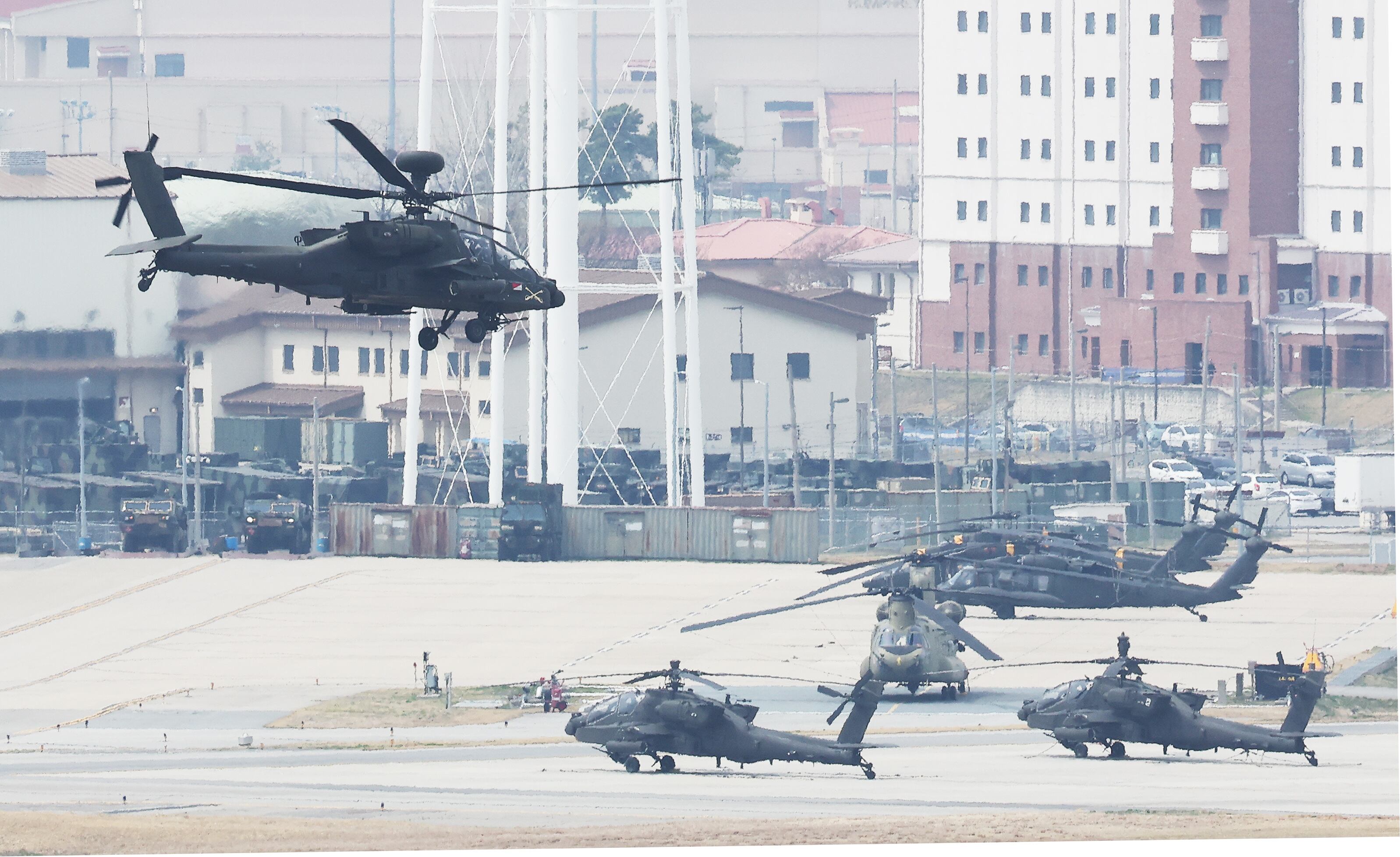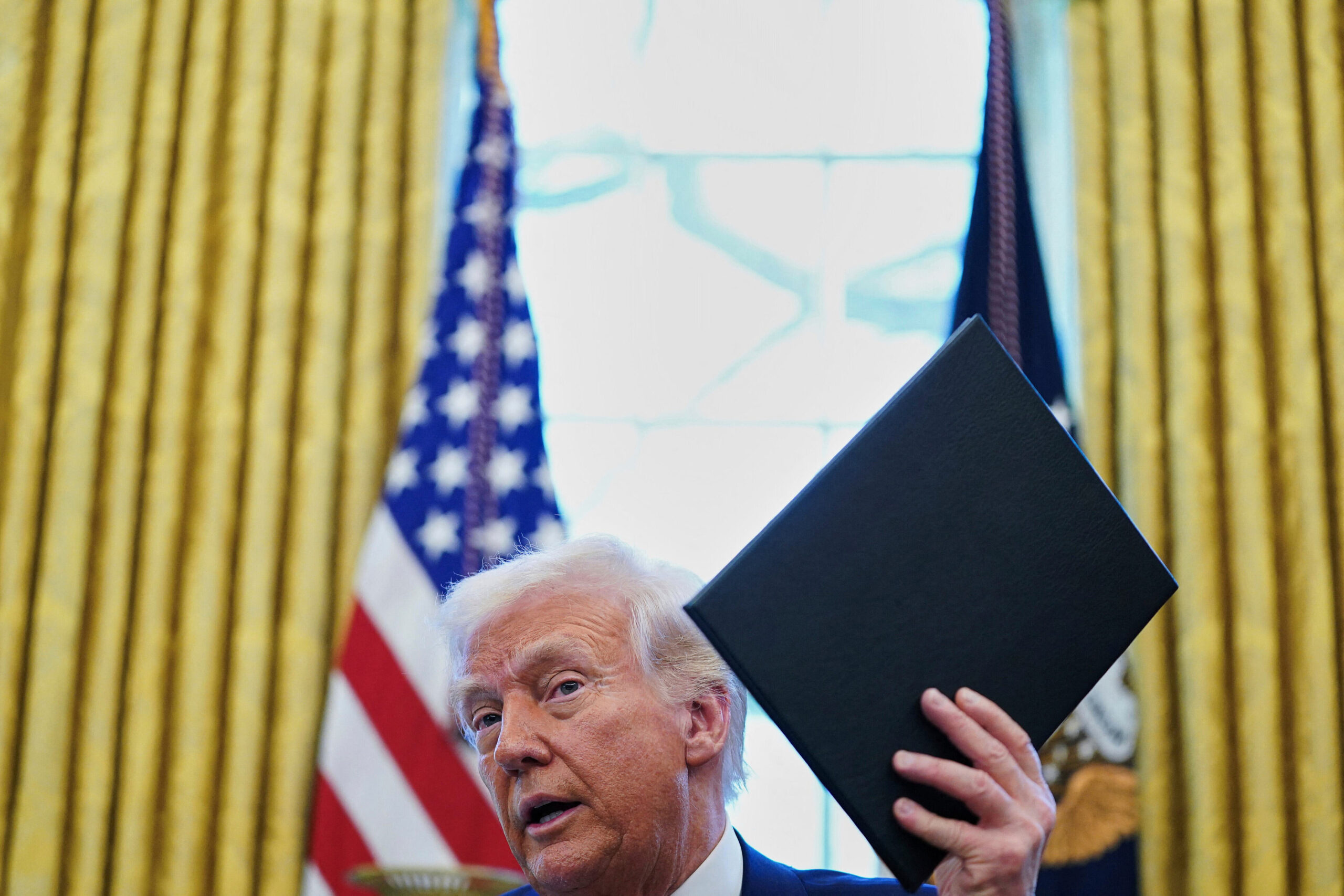U.S. President Donald Trump told South Korea’s acting president Han Duck-soo on April 8 that he intends to bundle negotiations on trade, tariffs, and defense cost-sharing into a single comprehensive deal, calling the approach “ONE STOP SHOPPING – a beautiful and efficient process!”
This unexpected action has cast uncertainty over the Special Measures Agreement (SMA), which was inked with the Biden administration just half a year prior. It now compels them to revisit negotiations. Signed in October 2024, this pact details South Korea’s monetary contributions toward maintaining U.S. troop presence until 2030.
Given Trump’s recent tariff decisions have already weakened the U.S.-Korea Free Trade Agreement (KORUS FTA), authorities are concerned that the SMA might suffer a comparable outcome.
Analysts say South Korea should respond with a broad, strategic approach—offering concessions where needed while securing meaningful gains. With Trump eager to notch early wins in economic diplomacy, flashy outcomes may matter more than technical details.
A comprehensive agreement from the top down would be most effective with Trump,” stated Yoon Kang-hyun, a previous deputy foreign minister responsible for economic affairs who spearheaded talks with the U.S. during Trump’s initial term. “Rather than breaking down matters by industry, we require an ambitious bundled accord.
Trade Minister Ahn Duk-geun underscored Seoul’s top priority: preserving the KORUS FTA. “We must preserve the free trade agreement through negotiations,” he told lawmakers on April 9 during a parliamentary committee hearing.
Trump’s push for “one-stop shopping” has prompted calls in Seoul to consider tying defense cost-sharing with broader trade and tariff issues. Some experts say that could include offering to cover the full cost of U.S. forces in Korea.
“Trump once demanded a fivefold increase in our contribution, but what he really wants is a deal he can promote as a win,” said former foreign minister Yu Myung-hwan. “If South Korea shoulders 100% of the cost and gains stronger U.S. commitments on extended deterrence, including the nuclear umbrella, it could be a viable trade-off.”
Yu also suggested that this agreement might act as a template for Trump to encourage NATO partners to increase their military expenditures.
The former foreign minister Song Min-soon supported this view, proposing that South Korea should utilize these discussions to renegotiate its bilateral nuclear accord with the United States.
If Trump presents a chessboard, we’ll counter with a Go board,” he stated. “We will bear the entire expense for U.S. military presence, and as compensation, secure the authority to process uranium just as Japan does.
At present, South Korea needs to seek approval from the United States for uranium enrichment above 20%, whereas Japan has greater independence due to its nuclear cooperation pact with Washington.

Choi Kang, president of the Asan Institute for Policy Studies, said the renewed negotiations must focus on the alliance’s strategic purpose.
There is increasing discussion in Washington about using U.S. Forces Korea as a safeguard against China,” Choi stated. “It is important to emphasize that their primary role is to protect South Korea.
He cautioned against concentrating exclusively on costs. “By focusing only on the figures, we might miss the broader perspective,” he stated. “The main objective here is strengthening the U.S.-South Korea alliance in Northeast Asia—particularly as regional tensions involving China keep escalating.”
Yoon warned that an uncoordinated effort by separate government departments might prove counterproductive.
If each agency handles negotiations individually, we will always end up losing,” he stated. “This occurred during Trump’s first term when agreements regarding cost-sharing, Iran sanctions, and other issues were consistently reversed by President Trump.
In an April 8 interview with CNBC, U.S. Treasury Secretary Scott Bessent stated that President Trump intends to directly supervise tariff and trade discussions. Additionally, White House press representative Karoline Leavitt mentioned that U.S. military placements and international assistance might also play roles in comprehensive trade dialogues, highlighting Trump’s preference for a customized strategy targeting individual nations.
As per the present SMA, South Korea consented in October 2024 to increase its funding for maintaining U.S. forces within its borders by 8.3%, upping it to 1.52 trillion won ($1.13 billion) starting from 2026. This agreement was reached after eight negotiation sessions and will be valid until 2030.
This sum represents approximately 0.06% of South Korea’s GDP and nearly 40% of non-personnel expenses related to stationing troops, although certain estimations suggest this proportion could be over 50%. In contrast, Japan is thought to bear close to 70% of these costs.

